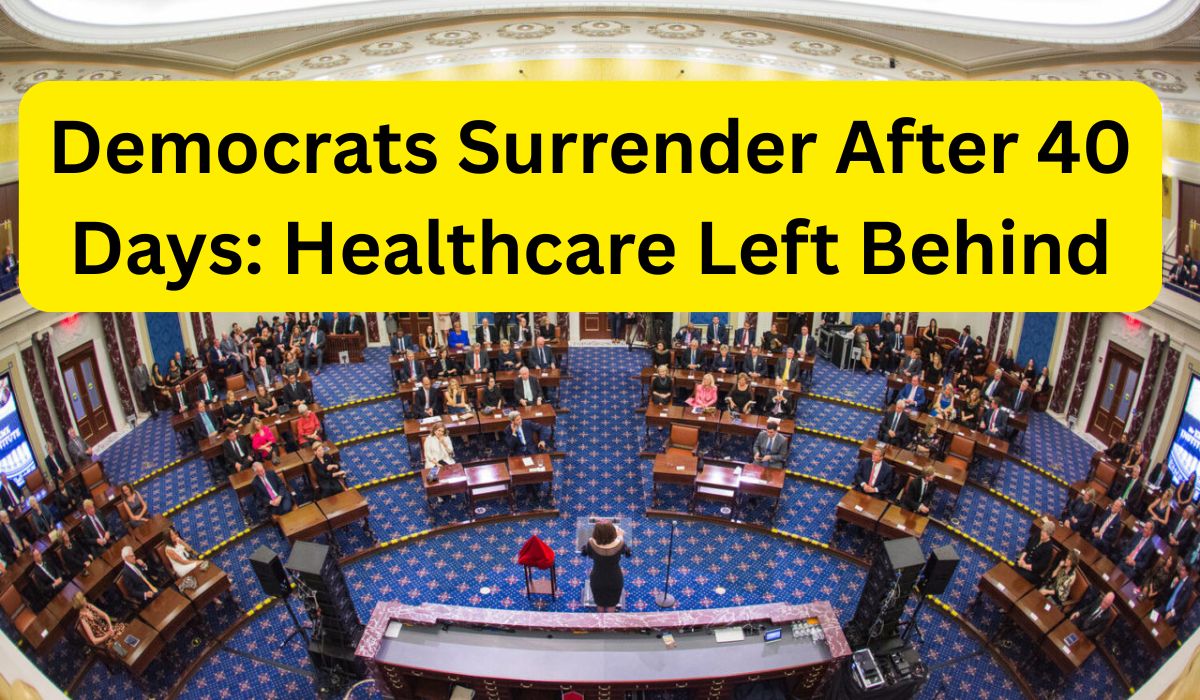The US Senate has cleared a major hurdle toward ending America’s longest government shutdown after several Democratic senators broke ranks to support a Republican funding measure. After 40 days of political gridlock, enough Democrats joined Republicans to advance legislation that could reopen federal agencies within days—but the compromise leaves critical healthcare issues unresolved.
The Breakthrough That Wasn’t
What’s particularly striking about this development is how little Democrats actually secured in exchange for ending their blockade. The Senate approved a stopgap measure extending government funding through January, along with a larger package to fully fund key agencies. But here’s what stands out: Democrats triggered this shutdown specifically to force negotiations on healthcare subsidies, and they’re walking away without those protections locked in.
Senate Minority Leader Chuck Schumer and his caucus held firm for over a month, leveraging the pain of a government shutdown to demand healthcare guarantees. The sticking point centered on subsidies affecting over 20 million Americans enrolled in the Affordable Care Act. Yet the deal moving forward offers Democrats only a promised vote on extending these subsidies—not actual passage, not binding commitments, just a vote that Republicans could easily defeat.
Senator Bernie Sanders captured the stakes in his floor speech before the final vote, warning that healthcare premiums could double, triple, or even quadruple for certain groups if these subsidies expire. “There are people who will now be paying 50% of their limited incomes for healthcare,” Sanders emphasized, illustrating the human cost of this political calculation.
Why Democrats Blinked First
Shutdown battles always come down to pain tolerance—who can withstand political, economic, and social pressure the longest. After six weeks, enough Democratic senators decided their constituencies had suffered enough.
The pressure points were mounting across multiple fronts. Air travel disruptions reached crisis levels as understaffed TSA and air traffic control operations caused widespread delays and cancellations, particularly painful timing as Americans headed into holiday travel season. Food assistance programs serving low-income families faced uncertainty. Most significantly, tens of thousands of federal employees entered their second month without paychecks, creating genuine financial hardship for families depending on that income.
For Democratic senators representing states with large federal workforces, the political calculus shifted. These government employees form a core Democratic constituency, and their representatives felt increasing pressure to address their immediate pain rather than hold out for broader policy victories.
The timing also matters. Democrats performed strongly in elections held the previous week, and several senators apparently felt the political environment allowed them to declare victory and move toward normalcy. The question is whether their voters will see it the same way.
The Deal’s Limited Gains
What Democrats did secure in this agreement is relatively modest. The legislation funds the Supplemental Nutrition Assistance Program (SNAP) through September, meaning food aid will continue regardless of any future shutdown in February or March. Federal workers will receive their overdue paychecks once President Trump signs the measure.
But examining the healthcare component reveals the weakness of this compromise. Democrats get an “up and down vote” in the Senate on extending subsidies—essentially a promise that the issue will reach the floor. There’s no guarantee the vote succeeds in the Senate, and even if it does, no assurance the Republican-controlled House of Representatives would take up the measure.
Both chambers must approve any extension for it to take effect. Republicans made no binding commitments on the outcome, just the process. For Democrats who shut down the government specifically over this issue, it’s a thin return on a 40-day investment.
Political Fallout and Future Shutdowns
The immediate reaction suggests significant discontent within Democratic ranks. Political analysts predict this decision could become Senate Minority Leader Chuck Schumer’s “Waterloo”—a defining defeat that undermines his leadership position. Reports indicate potential primary challengers are already considering runs against Schumer from his left, arguing he capitulated when Democrats held the stronger political hand.
Notably, Schumer himself voted against the final package, a move widely interpreted as political cover. By voting no while allowing enough of his caucus to vote yes, he attempts to have it both ways—ending the shutdown while maintaining opposition credentials. Vulnerable Democratic senators like Mark Warner also voted no, protecting themselves from progressive backlash while their colleagues provided the votes Republicans needed.
Here’s what makes this particularly significant for markets and the economy: the agreement only extends funding through January. That means we could face this exact scenario again in roughly six weeks. The fundamental disagreements remain unresolved, and Democrats still lack the healthcare protections they initially demanded.
What to Watch in the Coming Weeks
The legislation now moves to the House of Representatives, where the Republican majority is expected to approve it quickly. President Trump’s signature would follow, formally ending the shutdown and releasing funding to federal agencies.
But the real question concerns February. Will Democrats restart this fight when funding expires at month’s end? They’d face the shutdown without the SNAP benefits leverage—that program would be funded through September under this deal. However, the healthcare subsidy issue remains unresolved, and the political dynamics that created this shutdown haven’t disappeared.
The broader pattern emerging from this episode reveals a familiar Democratic challenge: maintaining unified opposition when constituent pain reaches critical levels. Republicans proved they could tolerate shutdown pain longer than their opponents anticipated, a lesson that will inform future budget battles.
For investors and businesses planning around government operations, mark late January as the next potential crisis point. The temporary nature of this funding resolution means economic uncertainty continues, just with a brief reprieve. Federal contractors, government employees, and industries dependent on regulatory operations should prepare for possible renewed disruptions in the first quarter.
The shutdown is ending, but the fight that caused it remains very much alive.
